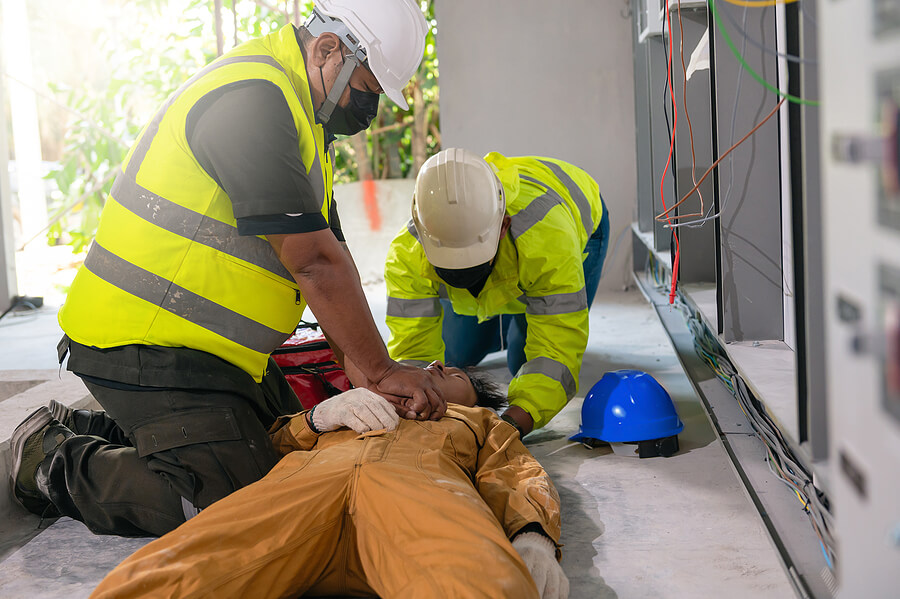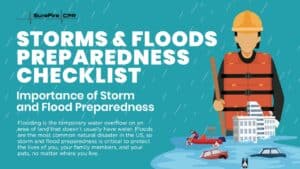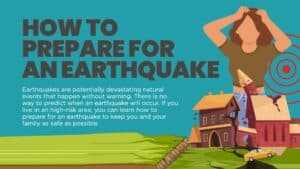You’ve seen it in cartoons––a character grabs an electrical cord or gets struck by lightning and in a big flash of light, they get electrocuted. They’re left a sizzling, smoking mess with their hair standing up straight. While electrocution in real life doesn’t look as dramatic as it does on TV, it is still extremely dangerous. What do you do when someone is electrocuted?
The National Center for Biotechnology Information cites that there are around 1,000 electrical shock deaths per year in the U.S. and at least 30,000 electrocution cases per year that aren’t fatal. Most cases of electric shock occur in workplaces and electrical workers, but there are also a significant number of cases that occur in homes.
Should you ever be around someone who gets electrocuted, it’s important to understand electrocution first aid. Knowing how and when to intervene can not only help you save the victim, but it can also protect you from injuring yourself, too.
What is electric shock?
Electric shock, also called electrocution, occurs when a person makes direct contact with a voltage source and an electrical current travels through the body. It can result in external burns, internal damage, and sometimes even cardiac arrest.
There is a wide range of severity, depending on how high the voltage was, the patient’s health, the type of current, and other factors. Some cases can be minor and the victim might not sustain any major injuries. However, many cases of electrocution are quite serious and require immediate medical care.
1. Assess the situation
Unlike other types of injuries, sometimes it can actually be safer to wait before attending to the patient, as rushing into the situation could wind up getting you shocked, too. Do not make contact with the patient until you’ve ensured that the power source is fully turned off. If you’re at home and it is safe to do so, you may switch the power off. If you’re by a high voltage electricity source, call 911 and wait until the professionals can turn it off. Always make sure the patient is no longer in contact with the source of electricity before touching or moving them.
2. Assess the patient
If you are certain that they’re no longer in contact with the electrical source, you can check in with the victim. See if they are conscious and check if they are breathing normally. If they are unconscious and not breathing normally, they might be experiencing cardiac arrest.
3. Administer CPR
If the patient is demonstrating signs of cardiac arrest, you should administer CPR chest compressions. Place your hands in the center of their chest with one hand on top of the other. Press down firmly (around 2 inches deep) on their chest, pulsing at a rate of around 100-120 compressions per minute. According to the 2020 American Heart Association guidelines, if you feel comfortable you can administer rescue breaths, also known as mouth to mouth. To give rescue breaths, make sure their airway is open by tilting their head back and lifting their chin. Pinch their nose, and place your mouth over theirs. Then, blow into their mouth to facilitate artificial breath. For non-professional rescuers the compression to ventilation is 30 compressions and 2 breaths.
4. Treat any burns or other injuries
Electric shock victims might face other injuries or conditions besides cardiac arrest, including severe burns, muscle contractions, and seizures. Because of this, it is also helpful to understand basic first aid when administering electric shock treatment. If they have external burns, you can apply a bandage or clean cloth to cover the burns. If the victim
5. Seek medical assistance
Sometimes, the injuries sustained from electrocution are not apparent immediately. The patient may also become confused and might not recognize symptoms right away. As such, if you suspect a case of electrocution, it’s important to call 911 and seek medical assistance. Doctors can assess for damage to internal organs, arrhythmias, and other potential issues.
Learn First Aid with SureFire CPR
Becoming CPR certified could just save a life during electrocution situations and beyond. Enroll in a CPR Certification class with SureFire CPR to learn how to give CPR with hands-on practice. We’ll cover how to administer CPR for adults, children, and infants, how to use an AED, as well as how to assist choking victims. Our courses are taught by real-world paramedics, firefighters, nurses, and more. We have plenty of stories from the field to share and we’re ready to answer all of your questions!
We also offer combined courses that delve into first aid, too. In just one course, you’ll learn everything you need to know about CPR, AED, and basic first aid. This is a great option for anyone who wants to sharpen their rescue skills and learn more about how to help patients. We have many convenient offices throughout Southern California, and there are plenty of class dates and times to choose from––so it’s easy to fit training into your busy schedule!
If you’d like to learn more about these or any of our other first aid and CPR classes, click here. If you have any questions or you’re ready to register for a course, go ahead and give us a call at (888) 277-3143 or check out our schedule! You can register for classes 24/7 online at www.SureFireCPR.com.







